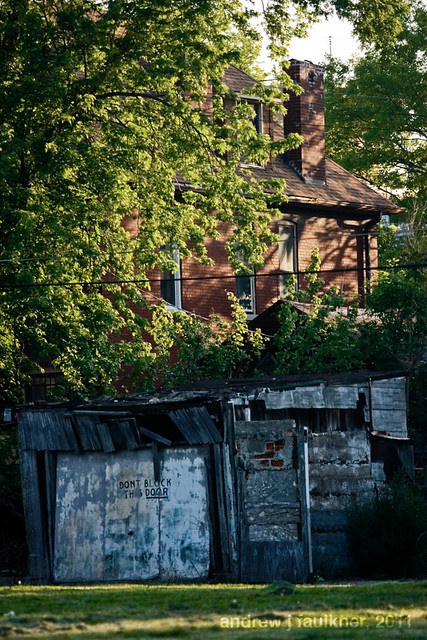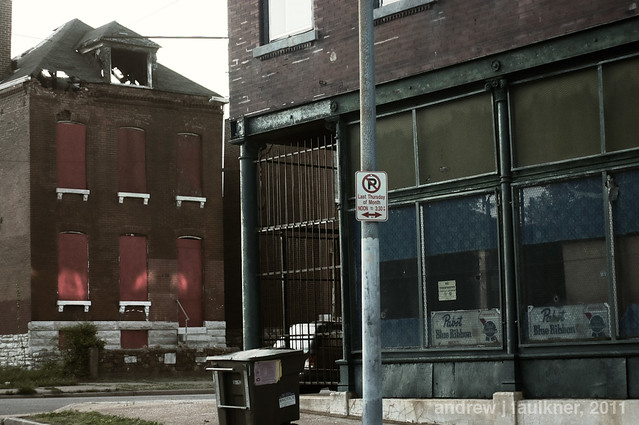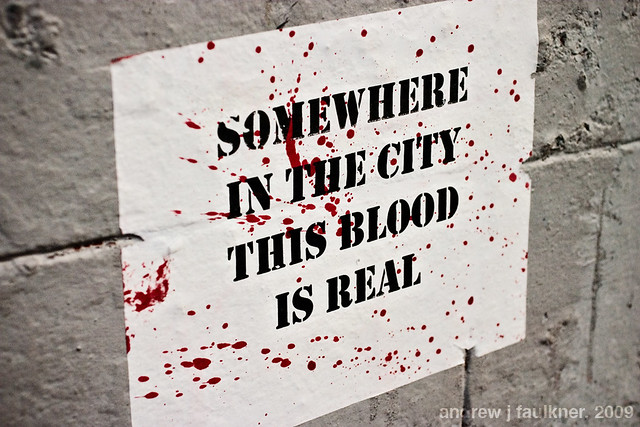"The camera makes everyone a tourist in other people’s reality, and eventually in one’s own." -- Susan Sontag.
Participants exchange a charitable donation for a dart and throw the dart at a wall-sized projected map of the city. Once your dart lands you have one month to create a photograph from within a block of where your dart landed. St. Louis's geographic reality strangely couples with the physics of dart throwing: the favored sector of the Central Corridor extends from downtown straight west across approximately 30º of what is essentially a 180º city. Many of the newly resurgent neighborhoods of the city occupy an additional 30º to the south of the Central Corridor and the middle-class stable and quasi-suburban neighborhoods occupy the outer part of the 20º to the South of that. What this means for dART is that those who are timid in their throw land in comparatively bland neighborhoods. I aimed high and hard and overthrew my intended targets of Vandeventer and Hyde Park, landing near E. Grand in the College Hill neighborhood (not to be confused with the BET series).
Approaching the photography I made several key decisions. The first was to reinforce the concept of dART St. Louis and center my investigation and images on the exact intersection of 19th and Bissell St. where my dart landed. The second was to avoid photographing either one of the iconic standpipe water towers equidistant from my site. Finally, owing to its location, College Hill is one of the first places in the City of St. Louis to see the rays of the morning sun and I decided to shoot as close to dawn as possible.
The blocks around my site have seen a systematic and continued population collapse over the past 50 years. Today, in the four blocks surrounding the site there are only 35 structures within 300 feet of the intersection out of 80 lots and two of the closest eight buildings are owned by the Land Reutilization Authority. The neighborhood was eerily quiet as I began taking pictures at 6:30am.
 Morning dew
Morning dewThe juxtaposition of cooly bleached wood and brick warmed by the rising sun caught my eye. This image was chosen for my submission through a crowd-sourcing effort by my facebook friends.
 Quiet streets on College Hill
Quiet streets on College HillThis image captures the quiet and desolation of the particular corner quite well.
 A worrisome detail
A worrisome detailAs I began to look more closely at the details of the place a hidden narrative of tragedy emerged.
 momento mori?
momento mori?Once I got home and was working on the images in post-production, I noticed the small pile of stuffed animals along the wall at the extreme right frame of the image. Whether these were just discarded or a memorial to a victim I do not know, but their presence along with the bullet holes in the storefront casts a pall of unease over the images.
Through a little research, I discovered that almost a year ago an 18 year old male was shot multiple times from a moving car while standing in front of the storefront building I photographed. At the time he was listed in critical condition, but whatever happened afterward remains a mystery.
If the object of dART St. Louis is to make one feel like a tourist in one's own city, my experience reminds me of the single most effective piece of street art I have ever seen. I saw the following wheatpasting several times in New Orleans in 2009, where it was prominently put up throughout the touristy French Quarter:







